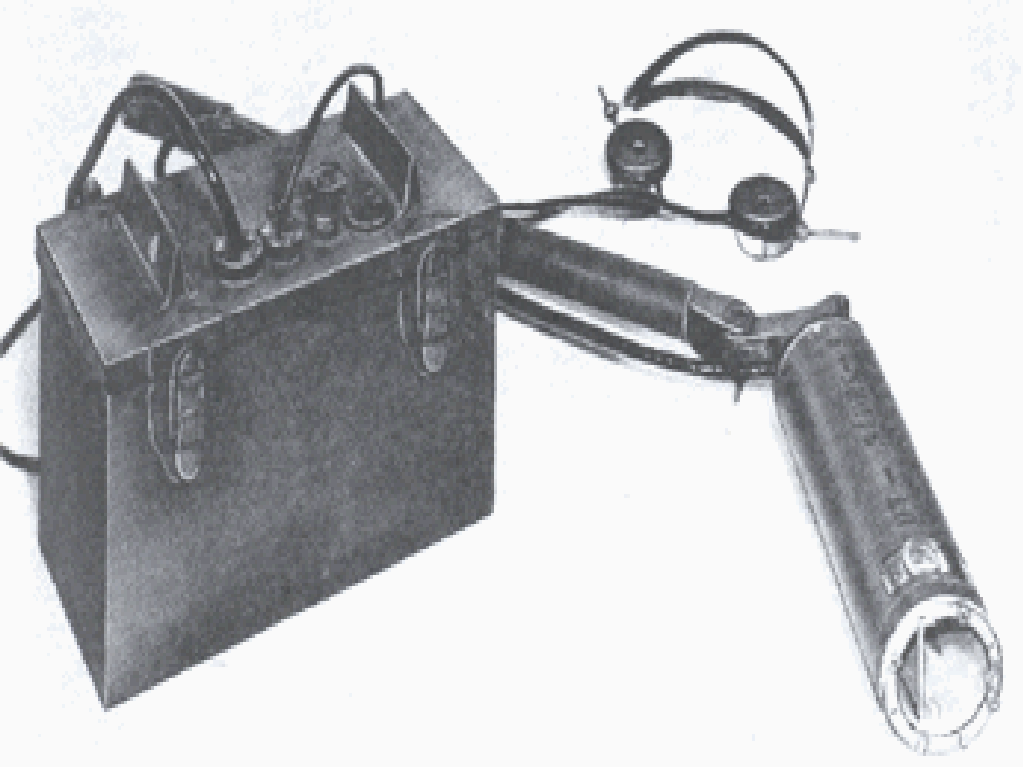
Geiger Counter Kits
In the late 1940’s and early 1950’s, a variety of vendors offered Geiger counter kits as a low cost alternative. Even the government offered detailed plans and parts list for building your own Geiger counter. This was meant to encourage individuals to assist the U.S. government in locating uranium deposits as part of the Uranium Rush of the period.
In 1949, F. Shunaman and C. Kiehl offered the plans for a low cost Geiger counter in the September 1949 issue of Radio-Electronics. The unit was one of the first kits to avoid the use of the large 300-volt batteries. It was built in a war surplus case and powered by low voltage batteries. It used one 67.5 volt and three 1.5 volt flashlight batteries.

Radio-Electronics Geiger Counter Kit Sep 1949
The “Student Type GM Counter” was offered in 1949 by H. LeVine and H. DiGiovanni of the New York Operations Office of the Atomic Energy Commission. They used two flashlight batteries and were designed for high school use and demonstrations. The Model 1 has a rate meter circuit with headset and neon flasher and sold for $37. It has a argon-chlorine filled GM tube operating at 1000 volts. The Model 2 was similar but had a argon-ethyl alcohol GM tube and was 10x as sensitive and sold for $45. The Model 3 had a neon-argon-chlorine GM tube operating at 300 volts and sold for $35. It could also be equipped with a mica window for detecting betas for $38. The Model 4 was similar to the Model 3 but had a lead shield on the GM tube to provide directionality. It sold for $43.
The March 1950 issue of Popular Science had a four page article on “Make Your Own Geiger Counter”. The article shows how to make a Geiger counter that is based on Atomic Energy Commission specification as provided for science students and home work shoppers. The basic circuit design was constructed in one day for about $25. It could easily detect the radium painted dial on a clock, a dentists x-ray machine or pre-war bathroom tile that was colored with uranium. The article explains the basic operation of Geiger tubes, the use of ordinary flashlight batteries, and basic power supply. The power supply can take a three volt source and a 10-1 transformer and put out as much as 1600 volts. Current drain is as low as 30 milliamps. The circuit is built on a breadboard. They introduced a new Geiger tube that operates at a lower voltage (about 350 volts as compared to 900-1200 volts) and contains a new inorganic gas mixture. It is 10-20 times more sensitive than its predecessors. The Geiger tubes are either gamma tubes or mica-window beta and gamma tubes.
There is also a 10-cent pamphlet with more information about Geiger counters made by the Atomic Energy Commission by the Document Sales Agency, AEC, Oak Ridge, Tennessee. For calibration, the National Bureau of Standards, offers standards for $3-$10 which can be used by measuring the light flashes as specific distances or meter readings. One can then use this to estimate radioactive content of any unknown sample.
This Geiger counter was detailed in the January 1955 issue of Popular Electronics. It operated on a 300 volt Everready battery.
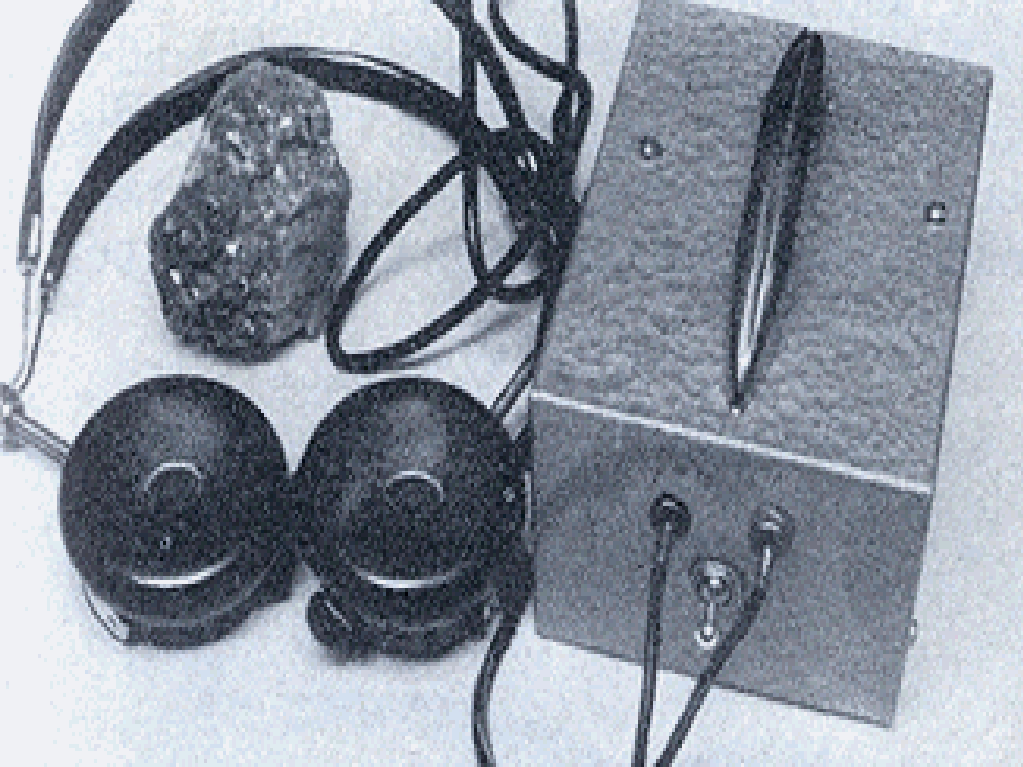
Popular Electronics Geiger Counter
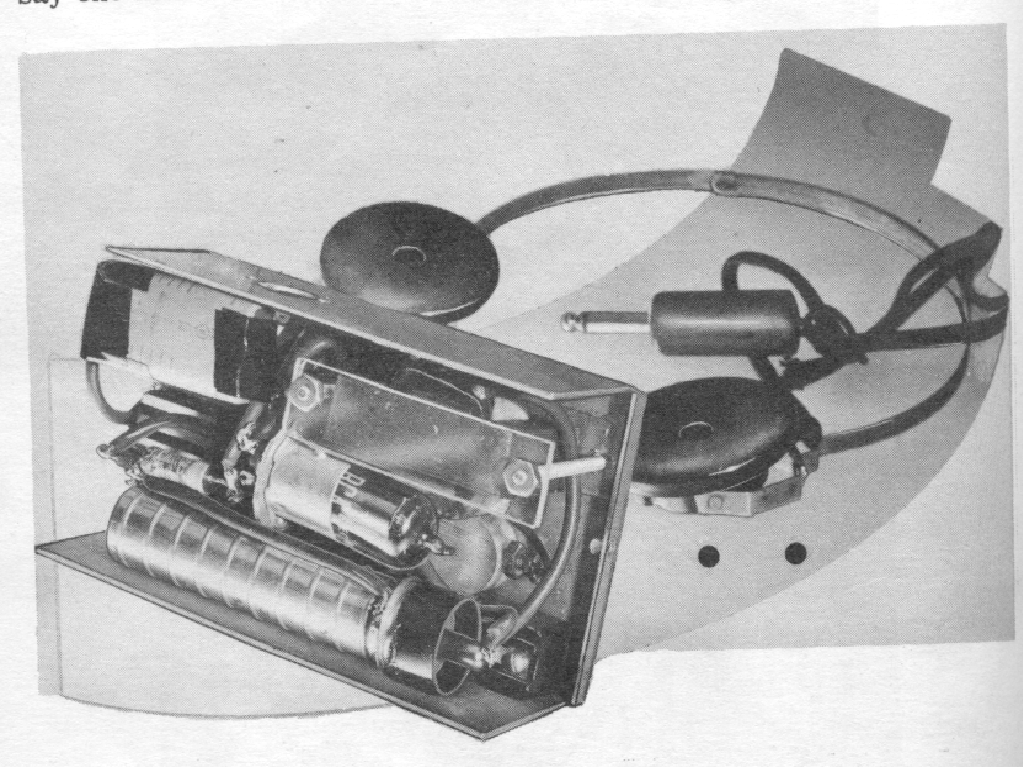
Popular Electronics Homemade Geiger Counter
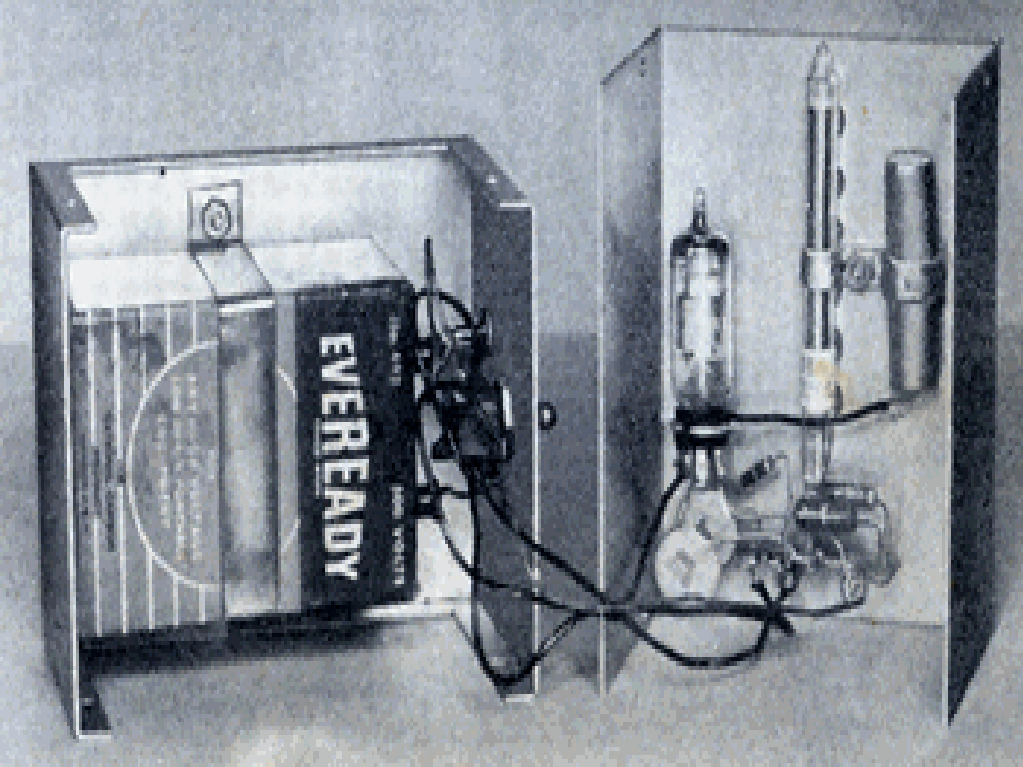
Internal View of Popular Electronics Geiger Counter
A simple professional type Geiger counter was offered in Radio and Television News in the February 1952 issue.
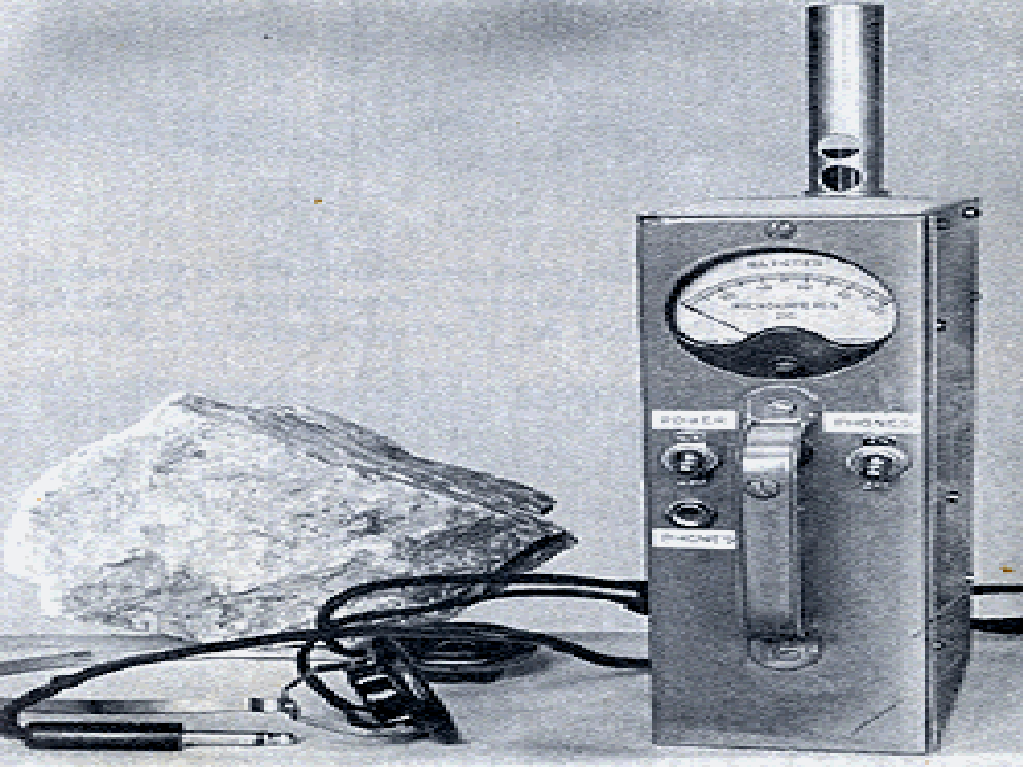
Radio and Television News Geiger Counter
In the 1955 special issue of Gems & Minerals on uranium prospecting, a practical Geiger counter was offered with instructions on building one. Dr. Locher of the Western Radiation Laboratory designed the circuit. It could be constructed for $15, about a third of the cost of buying one new. It uses a GM tube from Western Radiation Laboratory. The article gave assembly instructions and a complete parts list. It used one 300 volt battery and a 900 volt Geiger tube. The bottom of the case had a hole cut with a wire mesh screen for the Geiger counter window.
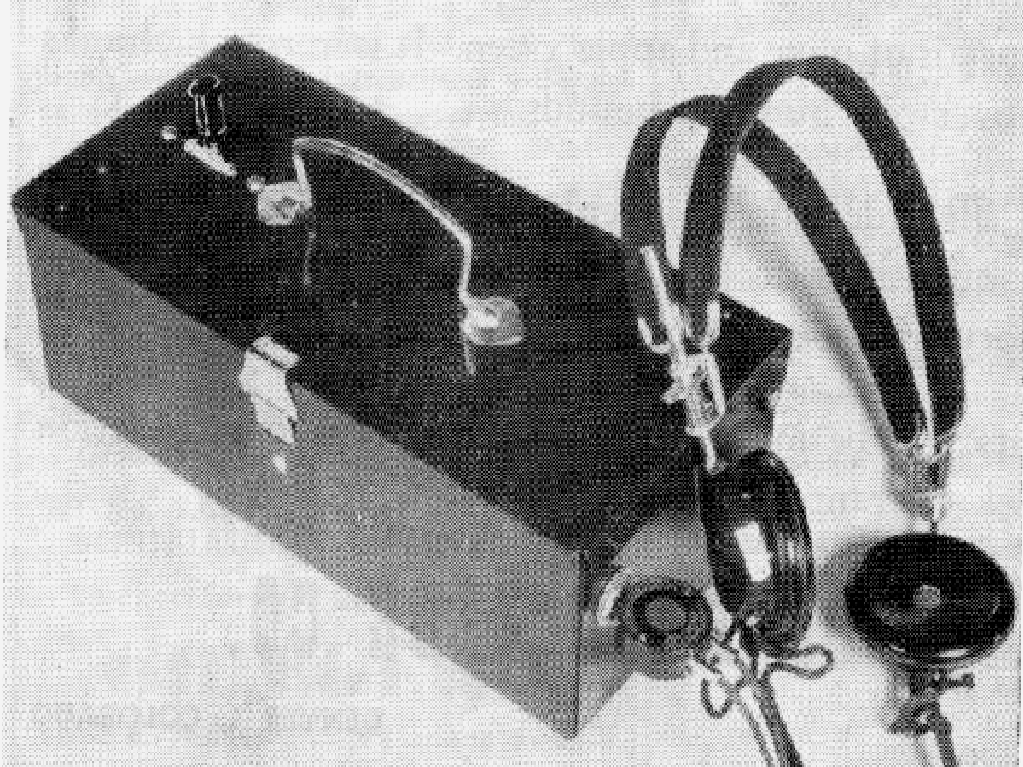
Homemade Geiger Counter 1955
Allied Radio Corporation of Chicago, Illinois advertised the Knight series of Geiger counter. They were super value kits for building a uranium locator and radioactivity detector for $15.95. Just turn is on, flip the high voltage switch and listen to the clicks on the headphone. It came with instructions, headphones, prospecting booklet, and radioactive sample. The weight was 2.5 lbs.
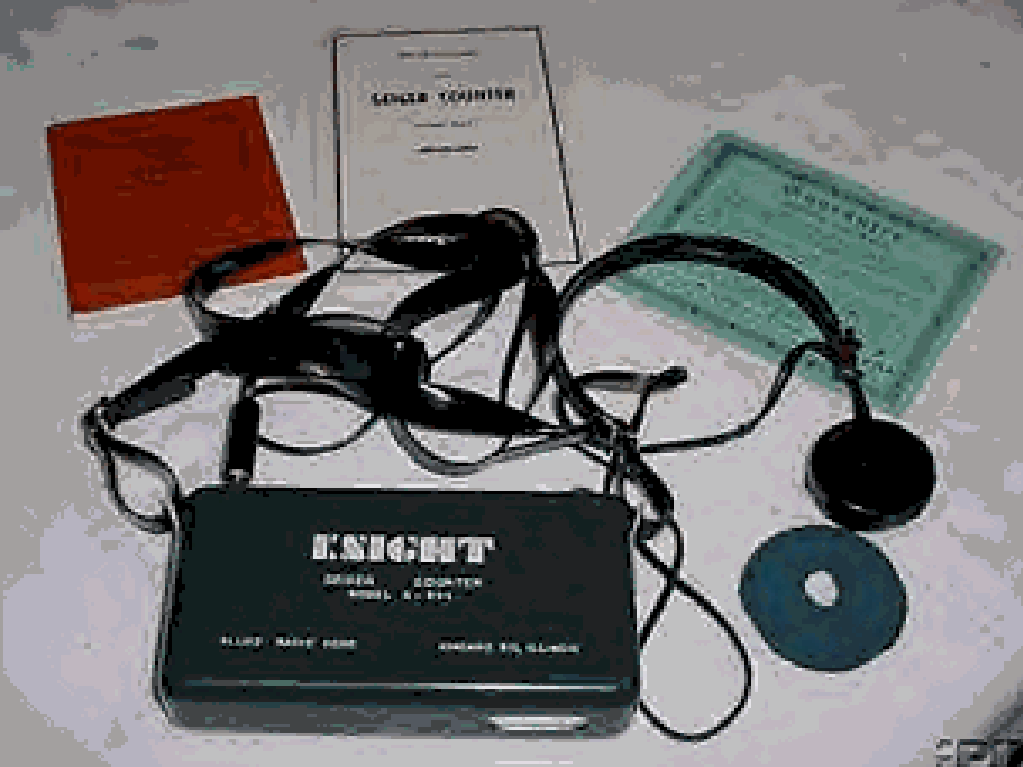
Knight Model S-344 1955
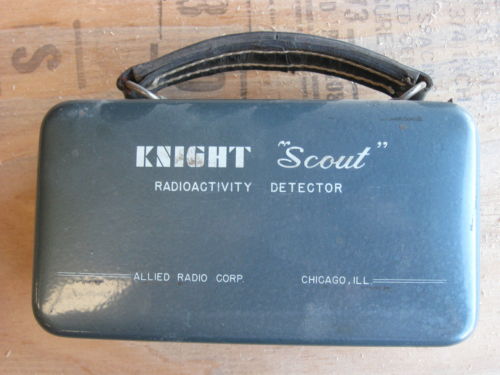
Knight Model Scout Radioactivity Counter 1955
The Knight Model S-345 was offered in the late 1950's.
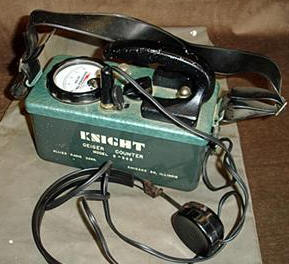
Knight Model S-345
Allied's Knight-Kits include the Model S-242 from 1956 described as a super-sensitive uranium locator and radioactivity detector. It was a super-sensitive unit for uranium locating and radioactivity detector. It is easy to build for a price of $15.95. Once assembled, just turn on the high voltage switch and listen to the "clicks" with the headphone. It weighs less than 2.5 lbs.
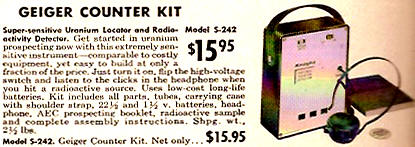
Allied Radio’s Knight Geiger Counter Model S-242 Ad 1956
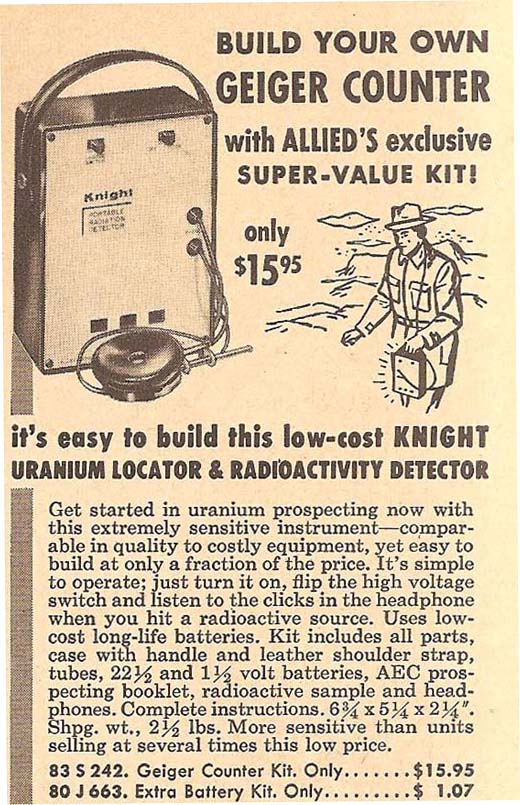
Knight Portable Radiation Detector Geiger Counter Kit Model S-242 Ad 1955
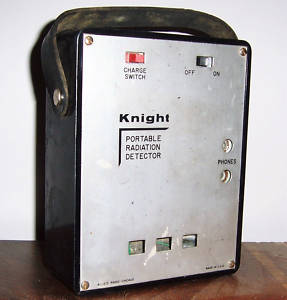
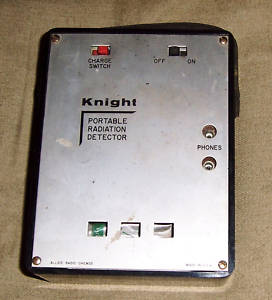
Knight Portable Radiation Detector Geiger Counter Model 38K182 1955

C & H Sales Company Ad 1955
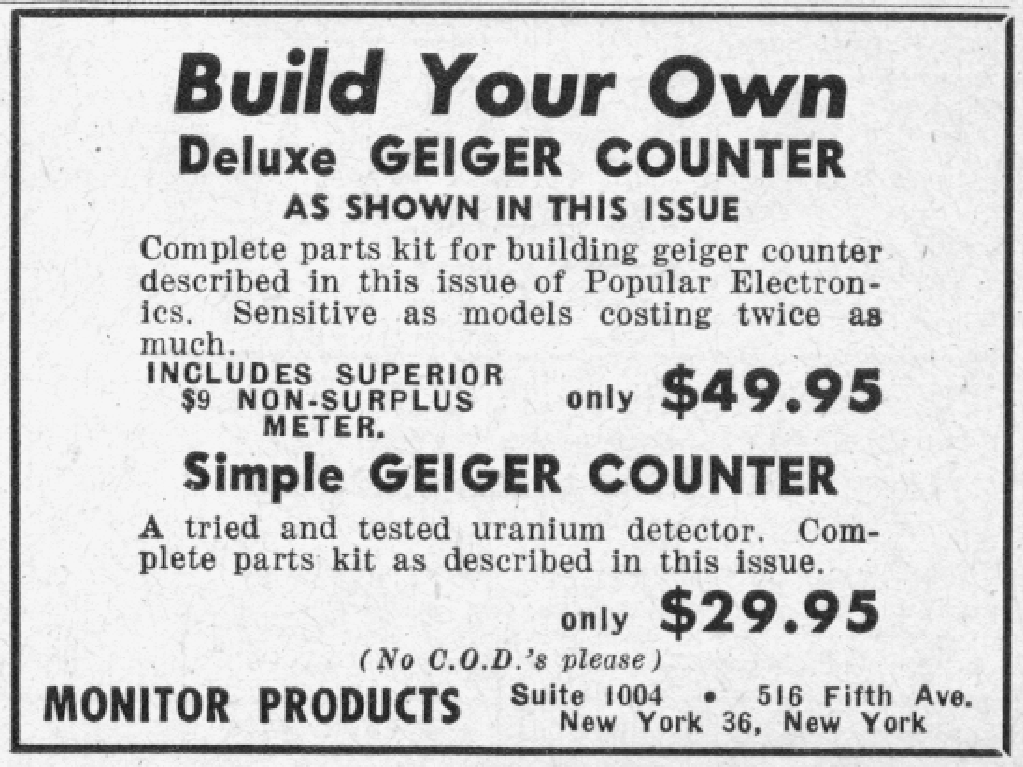
Popular science Ad for Monitor Products 1955
Electronics Applications offered the Model 210 in 1955 or $52.50. It was a compact unit 3” x 4” x 5” and weighed 2 lbs. An improved version of the Model 210 had an adjustment to set the precise voltage of the GM tube. It uses headphones and a neon flasher for indications. It could be purchased in kit form for $38.50.
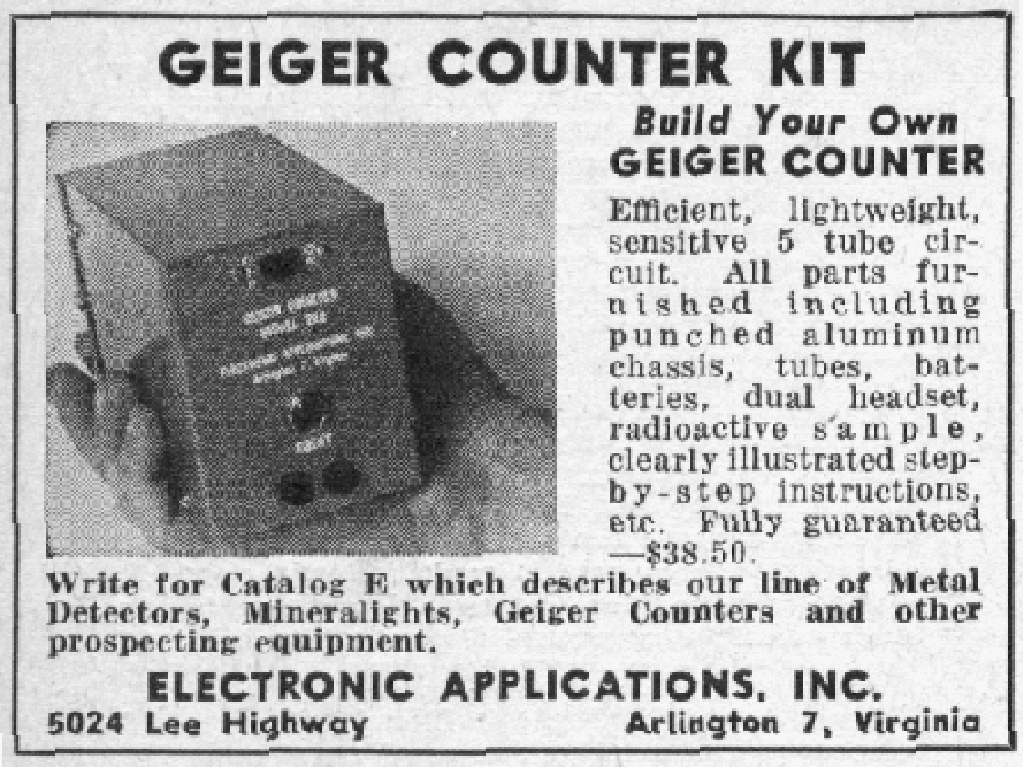
Electronics Applications Ad 1955
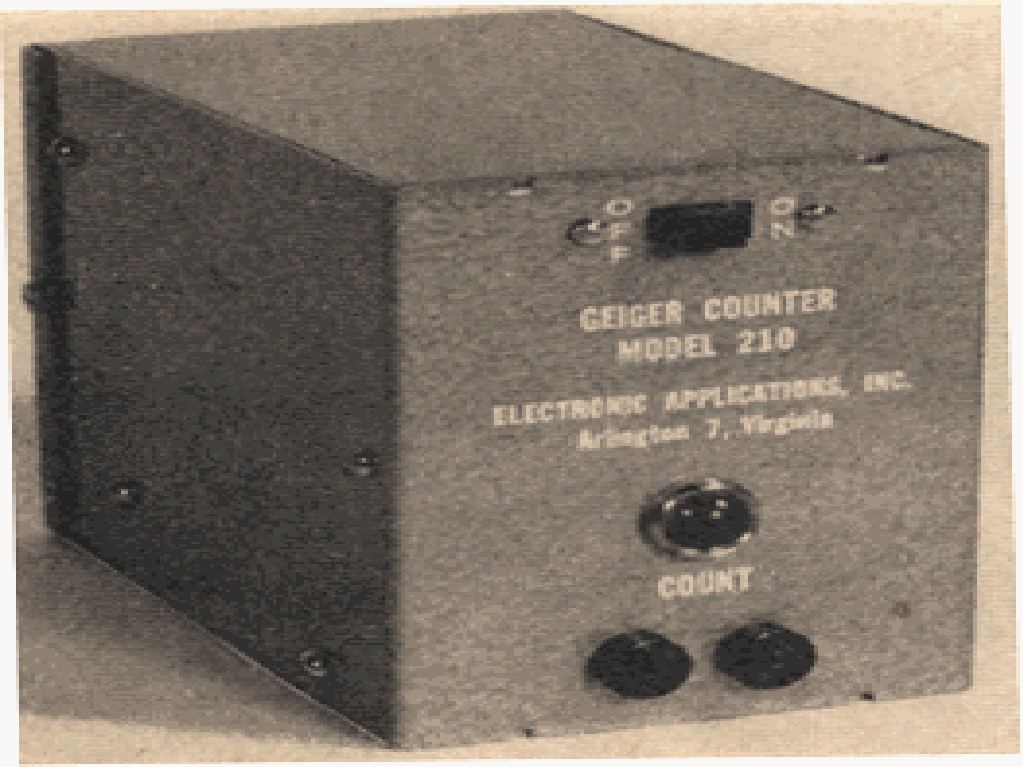
Electronic Applications Model 210 1955
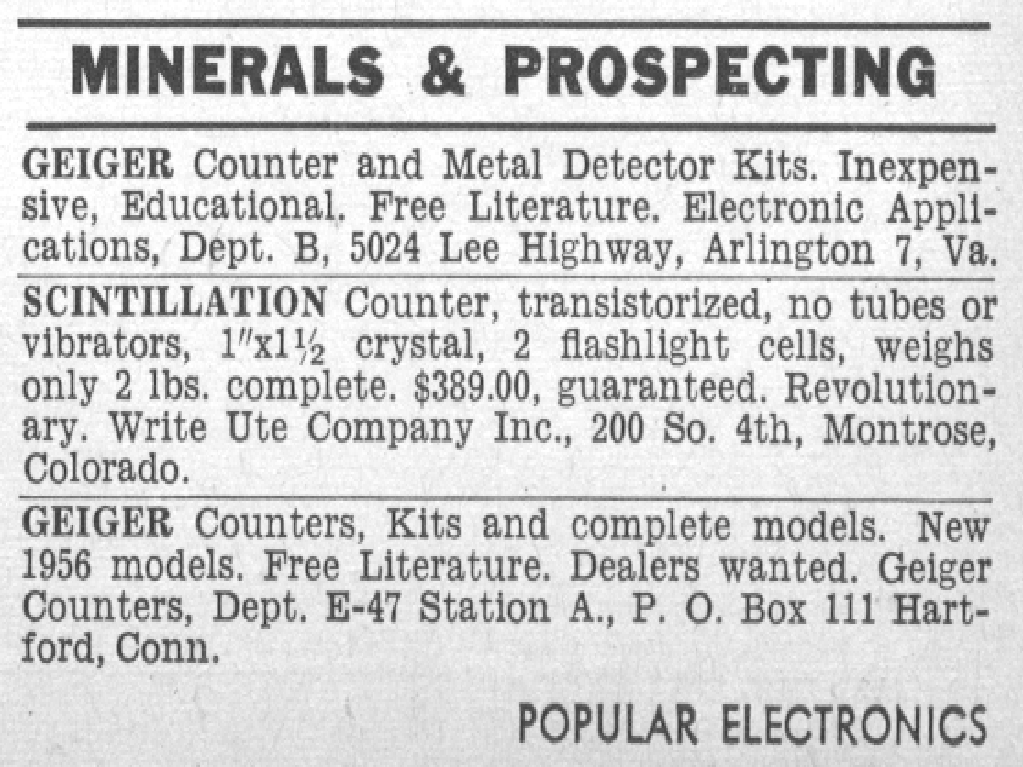
Geiger Counter Ad for Electronic Applications in Popular Electronics 1955

J Young Model K-2 Kit 1955
Barrett offered a “Simplified Counter” for $65.00 in 1955. In kit form it was $49.00. It uses a 900 volt GM tube and a 300 volt battery. The simplified counter is claimed to be as sensitive as a $150 unit.
The Pocket Geiger Counter was offered in 1951 by the Terminal Radio Corporation in New York City. The unit is 4.5” x 2.5” x 1-7/8” and can readily fit in a coat pocket. It uses a C size flashlight battery. The earphones provide clicks which increase in intensity with the strength of the source.
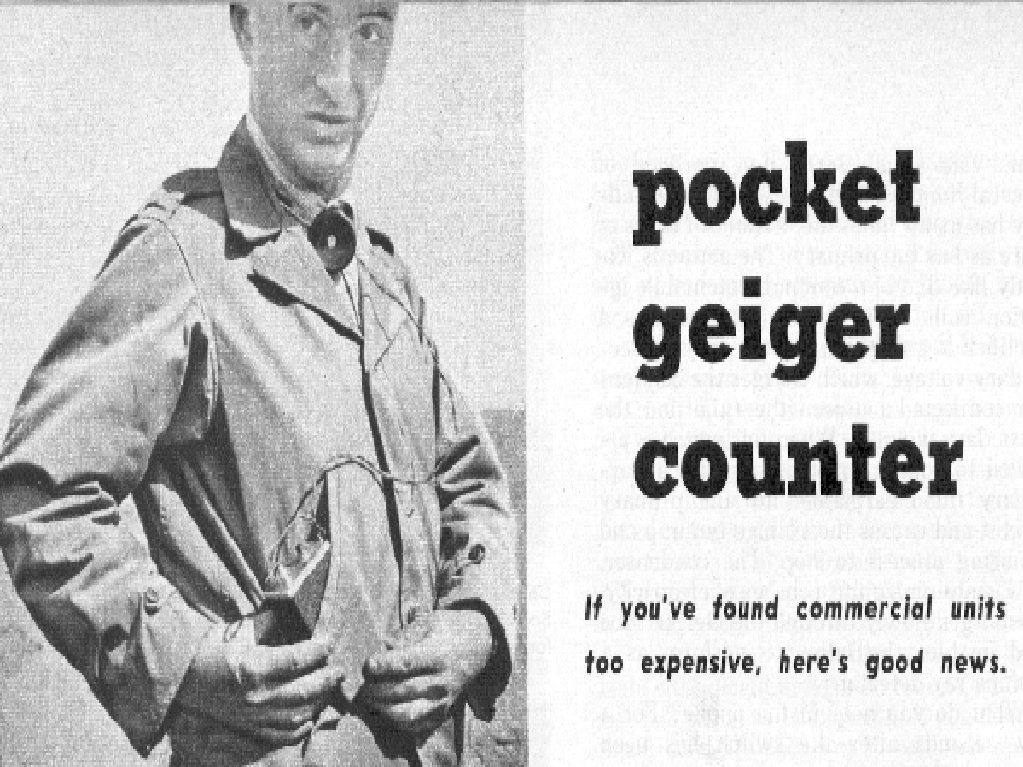
Pocket Geiger Counter Ad 1951
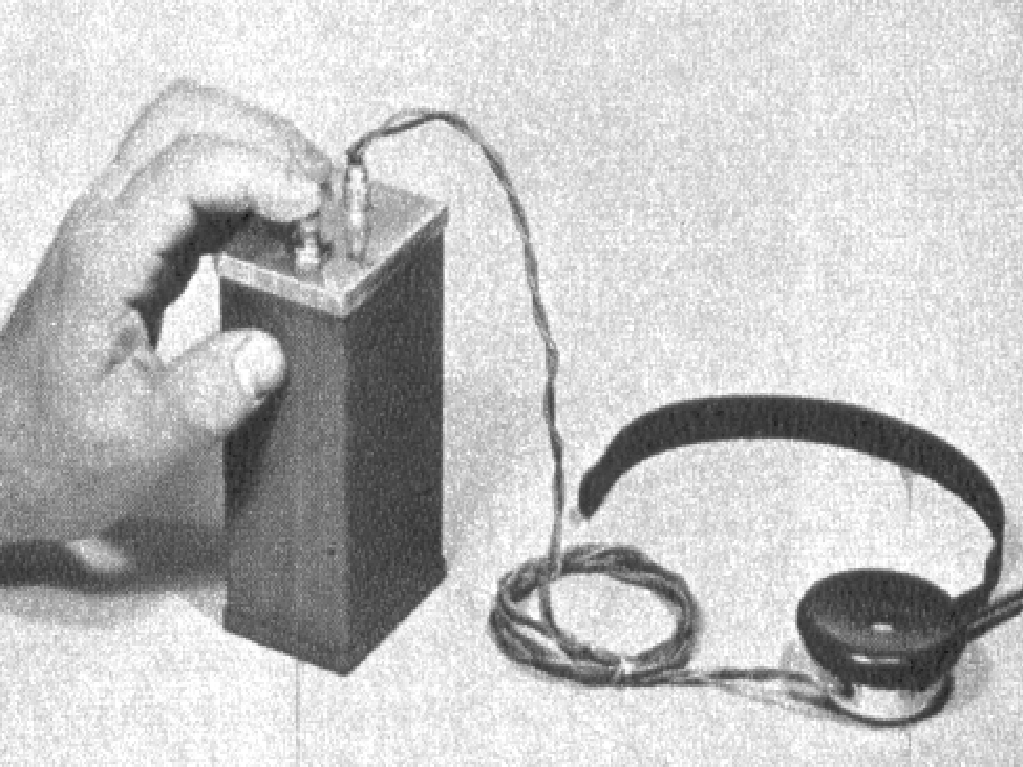
Pocket Geiger Counter 1951
Swift Optical offered the Kit No. 1 for $19.60 in 1955. The kit was a basic Geiger counter which included a Geiger tube, electronics, and wiring diagram. There were two others kits offered as well.
LeJay Manufacturing Company of Minneapolis, Minnesota, offered plans to build a Geiger counter for $1 in 1950. It was advertised in Popular Science as “Build a Uranium Locator”, an inexpensive approach for even non-technical people.
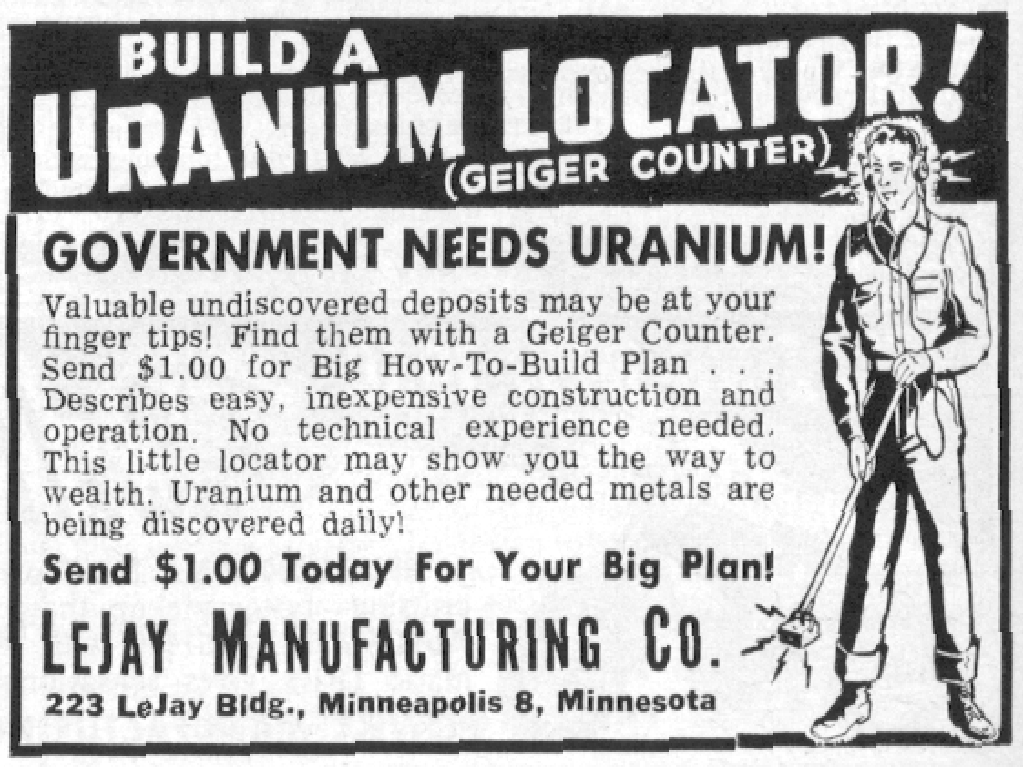
Popular Science Ad for LeJay Manufacturing 1950
Magma offered a “Uranium Detector” Model M-9 kit in 1955 for $29.95. The Kit has a GM tube and requires a 45 and 1.5 volt batteries. It comes complete with wiring diagram and single headphone unit. The unit can also be purchased complete assembled from Concord Radio Company for $39.50.
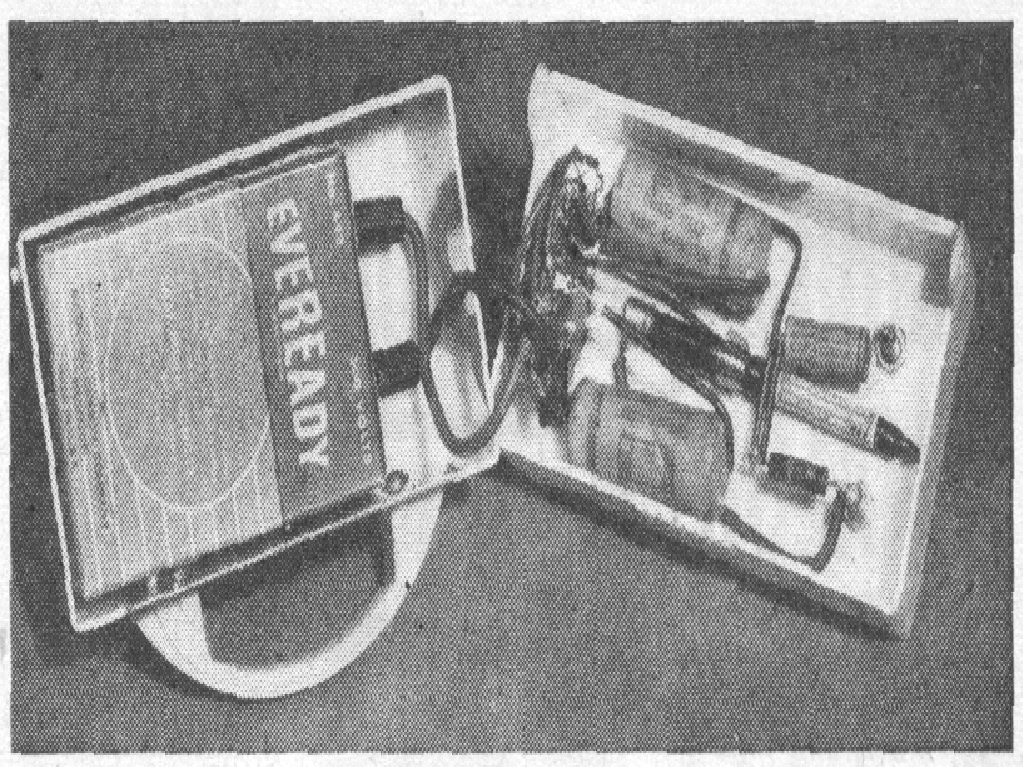
Science and Mechanics 1950
Science Kits Ltd., located at 5514 Hollywood Blvd. in Hollywood, CA, offered a build-your-own Geiger counter kit for the Searchmaster Geiger counter. It contained headset, tubes, Geiger counter tube, batteries plus a smart metal case and came with instructions for quick assembly. It was sensitive to both betas and gammas. As a special one time offer, the kit came with a free radioactive specimen and literature on how to locate uranium. The kit sold for $29.95 in 1950.
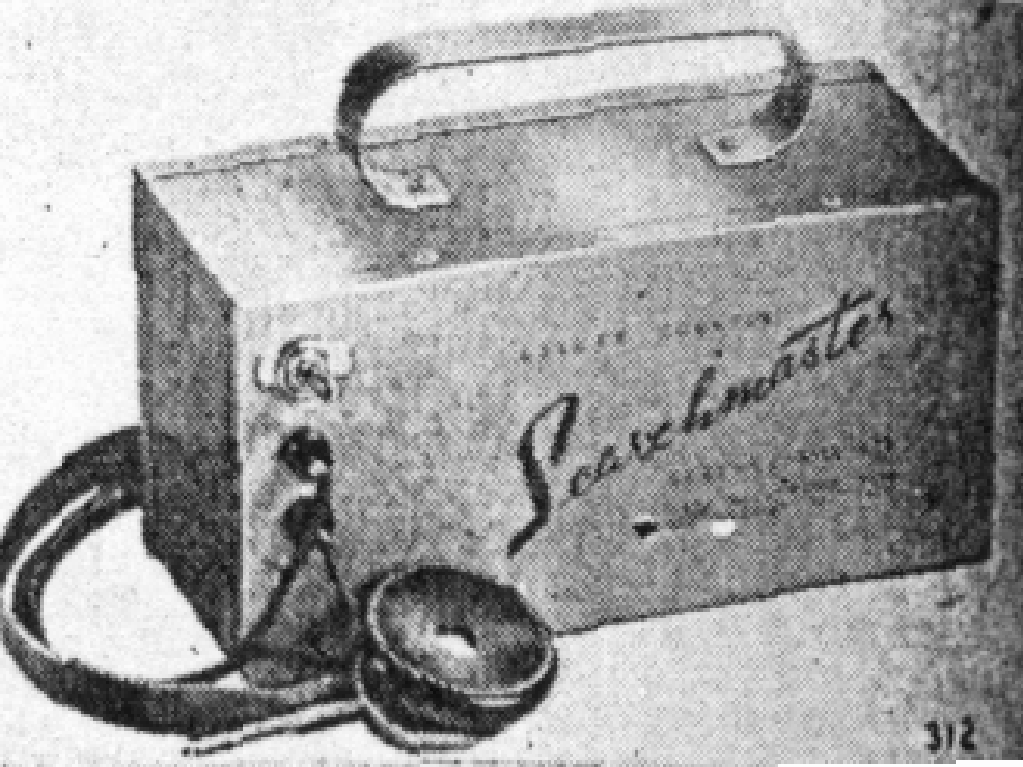
Science Kits Searchmaster 1950
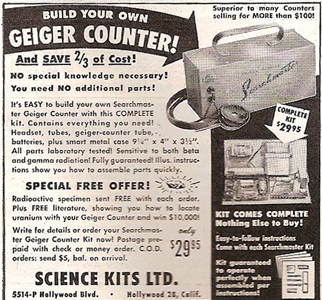
Science Kits Searchmaster Ad 1955
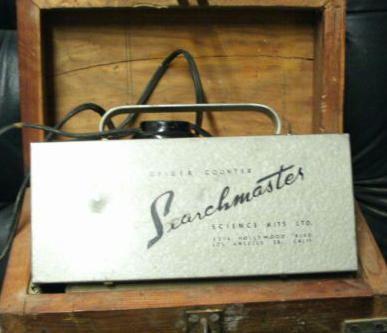
Science Kits Searchmaster Geiger Counter 1955
Sierra Scientific offered the Model 88 kit for $49.50 in 1955. It had a printed circuit to eliminate wiring problems for the home constructor. It had three sensitivity ranges, earphones, and a neon flashing light. It measured 4.5” x 8” x 3.5” and weighs 6 lbs. The unit came with an ore sample.

Sierra Scientific Ad 1955
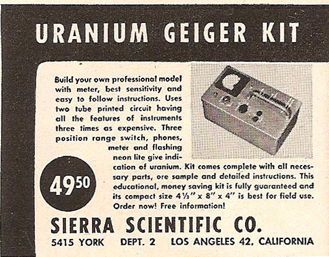
Sierra Scientific Ad 1955
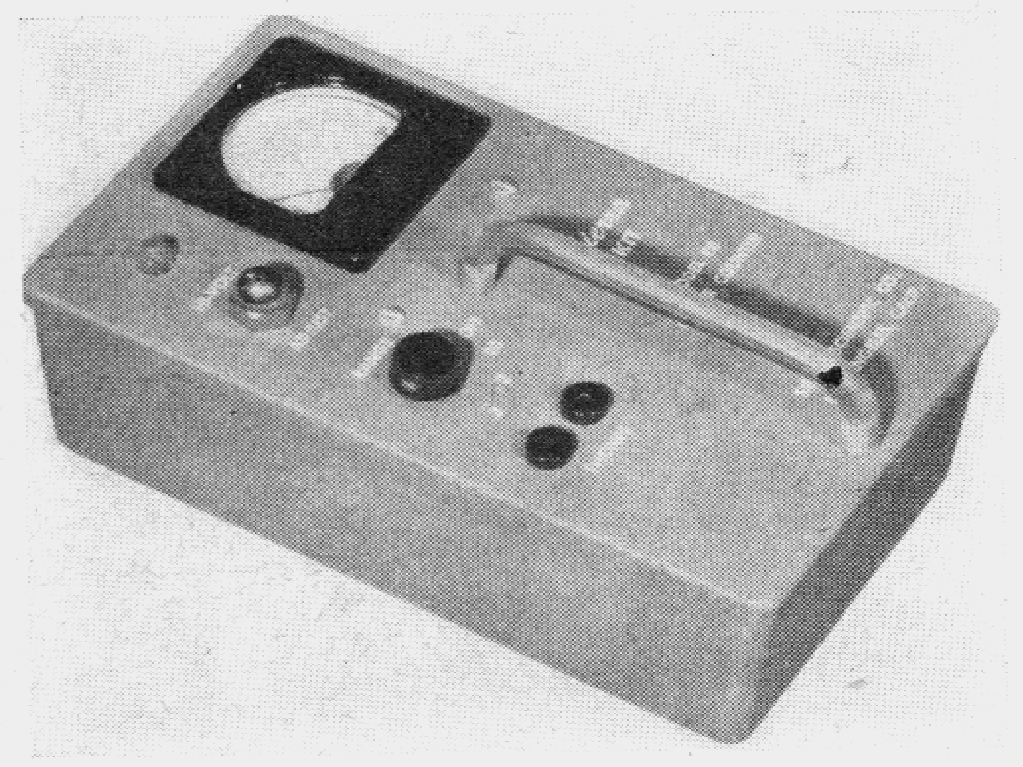
Sierra Model 88 1955
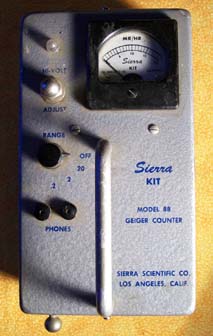
Sierra Model 88 1955
The Super Geiger Counter used circuits developed by the Atomic Energy Commission. The 1955 model used 6 Geiger tubes in parallel which gave a 6 fold increase over the single tube units. The unit could be built for $300-$400. The McEntee model was built for $180. The multiple-tube rig was called the Geiger Integrator. The meter ranges were 0.03, 0.1 and 0.3 mR/h. The unit is mounted in a seamless aluminum case with the six tubes aligned along the bottom.
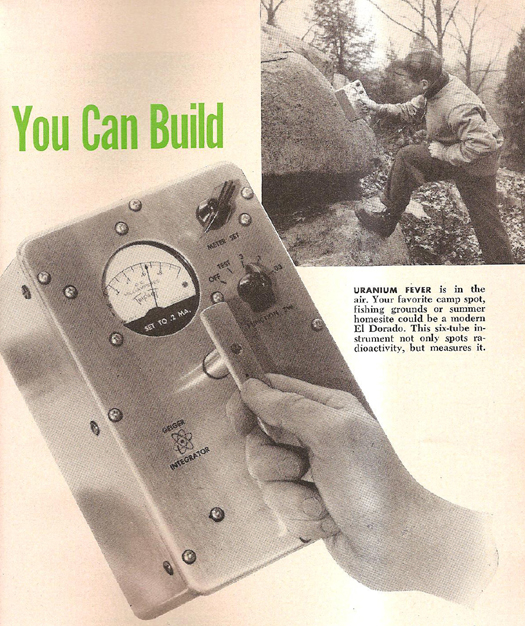
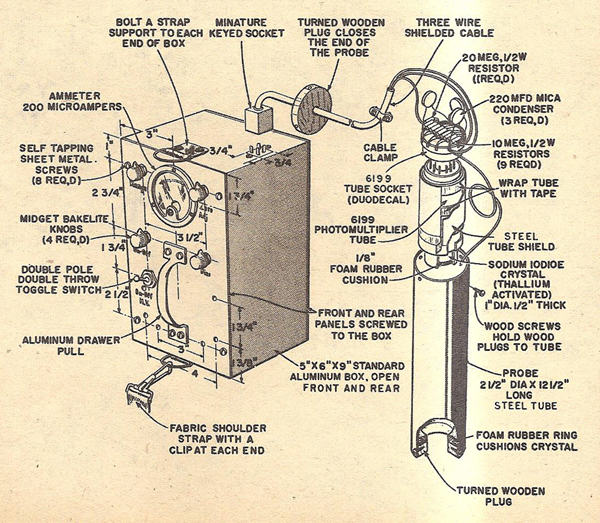
Super Geiger Counter from Popular Science Magazine by Howard McEntee 1955-1956
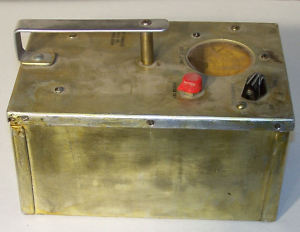

Super Geiger Counter made from kit 1950's
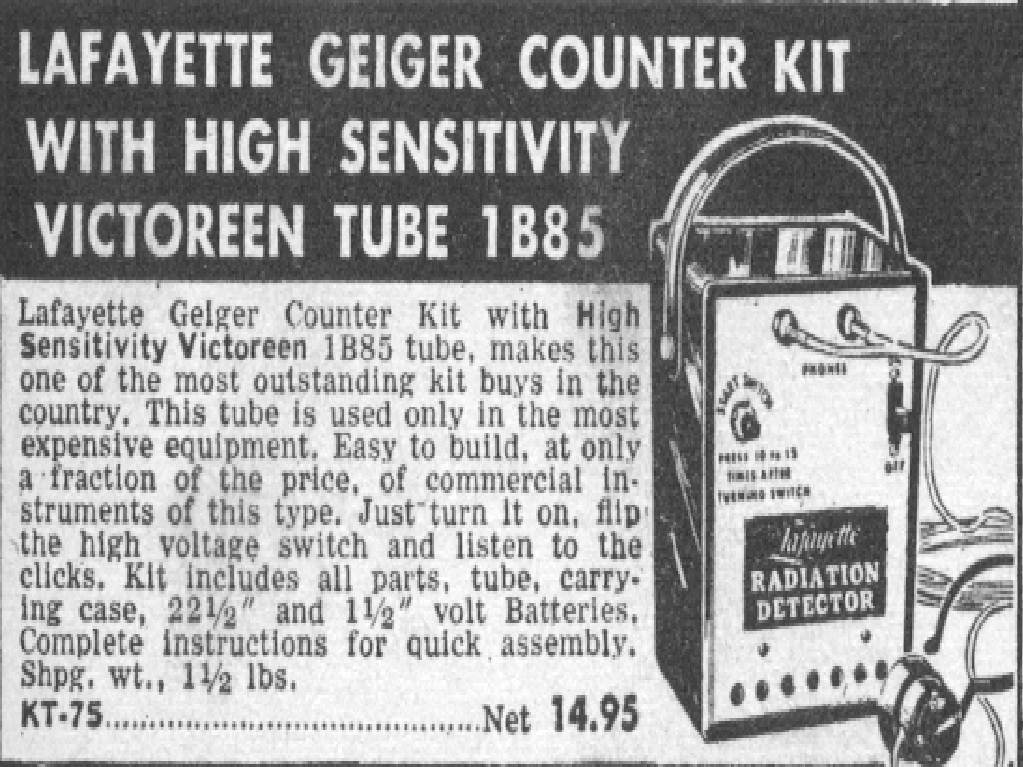
Lafayette Model KT-75 Ad 1955
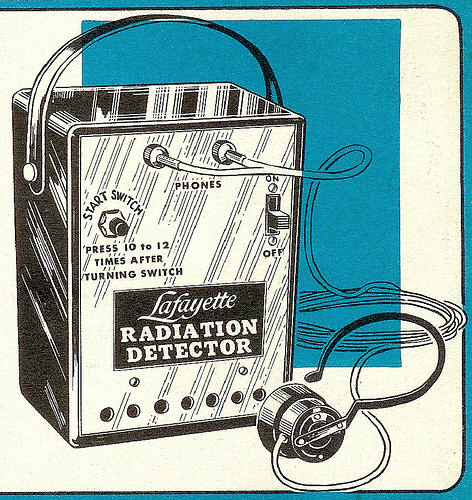
Lafayette 1950's
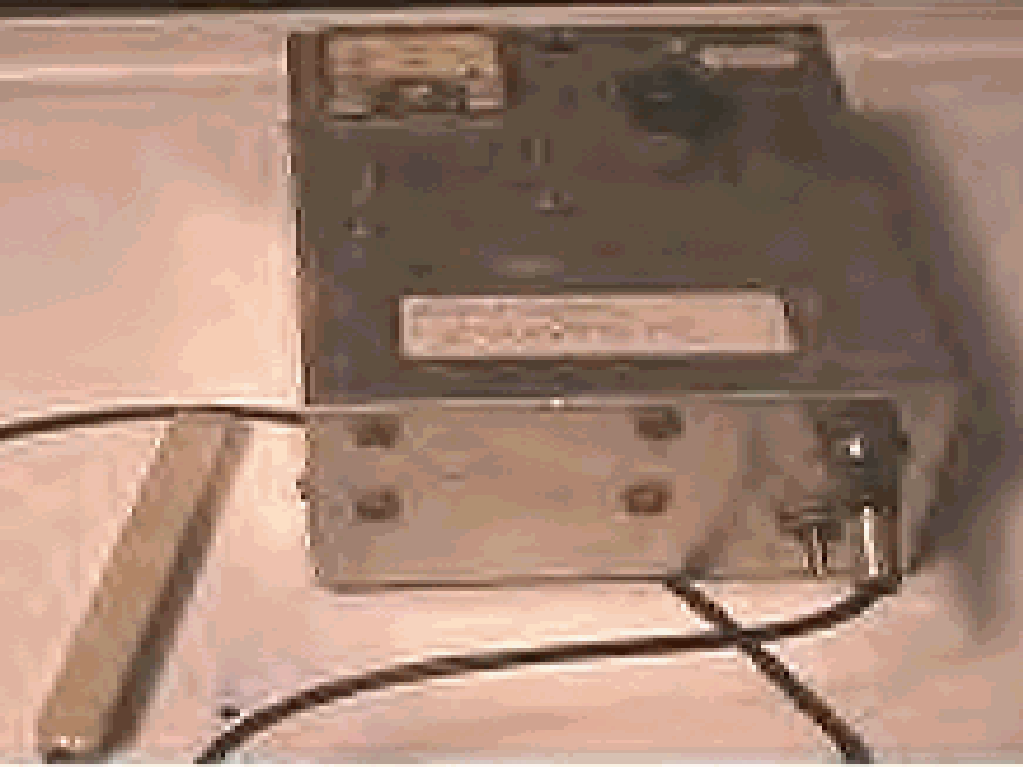
Lafayette Geiger Counter Kit 1960
The Heathkit Professional Radiation Counter Model RC-1 was offered in the 1950’s. Heathkit offered a variety of “building it yourself” kits with step-by-step instructions and giant-size pictorial diagrams. The kits were very popular during the 1950’s for low cost electronic instruments for the handyman. The unit has a 4.5” meter and aural speaker indicators. It has four measuring ranges and reads in cpm and mR/h. It uses a 900 volt bismuth tube in an external probe for beta-gamma detection. The sensitivity ranges are 100, 600, 6,000 and 60,000 cpm and 0.02, 0.1, 1 and 10 mR/h. The probe is satin aluminum and chrome plated steel. It used one 67.5 and two 1.5 volt batteries. The unit measured 9.5” x 6.5” x 5”.
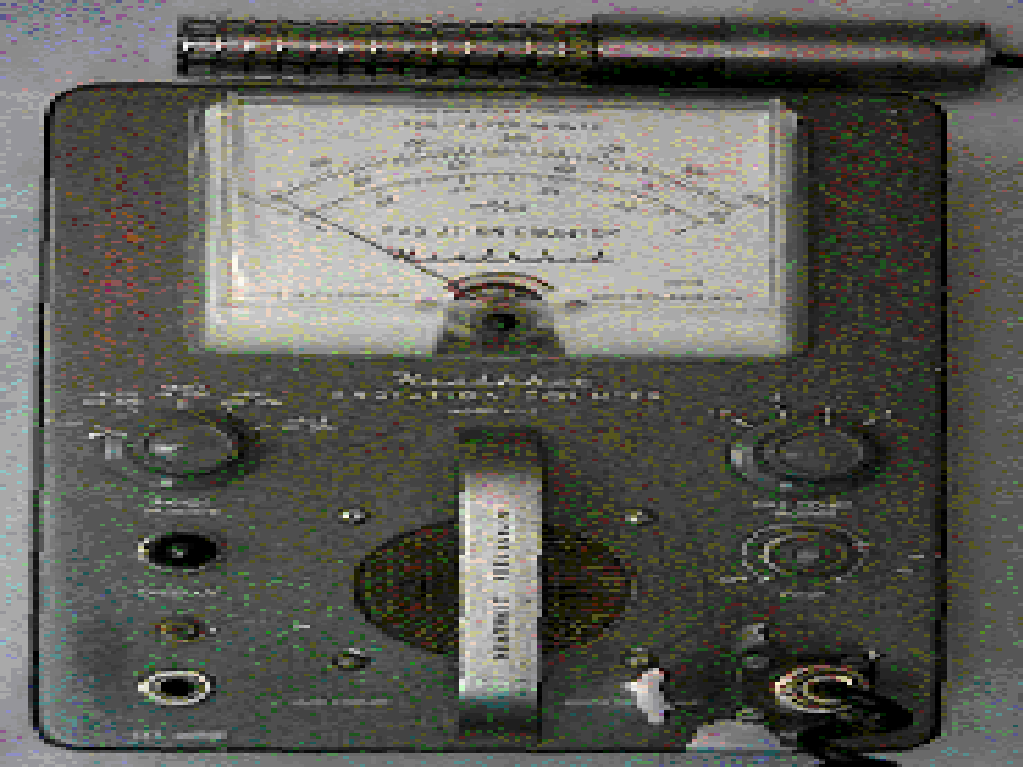
Heathkit Professional Model RC-1
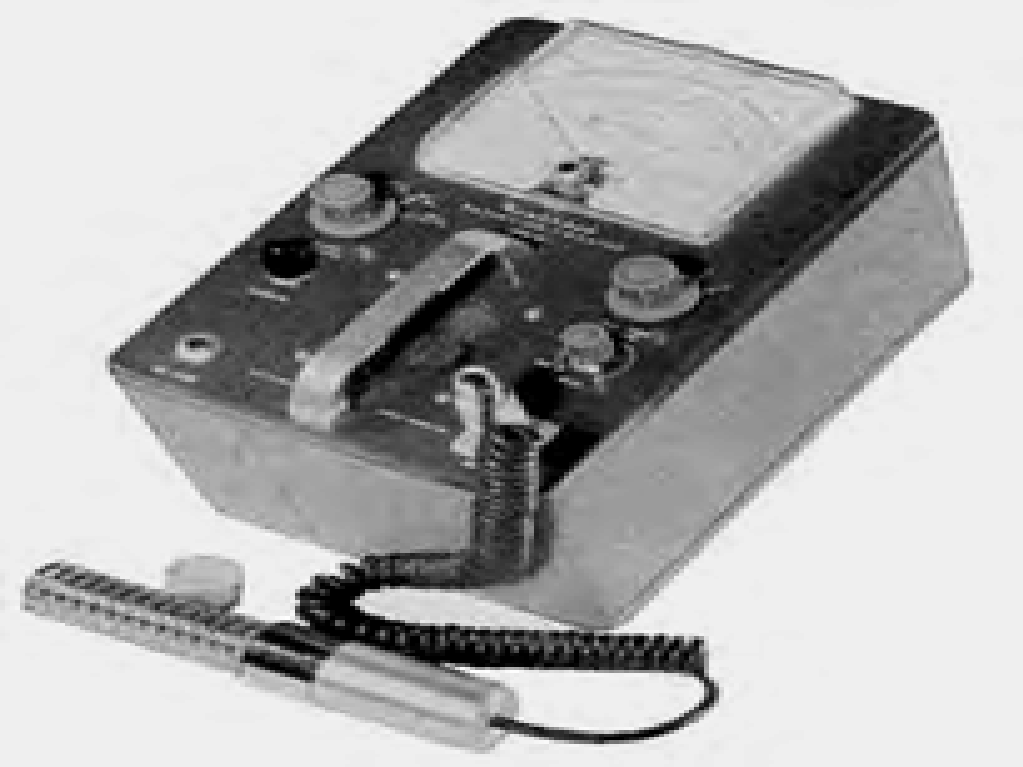
Heathkit Professional Model RC-1
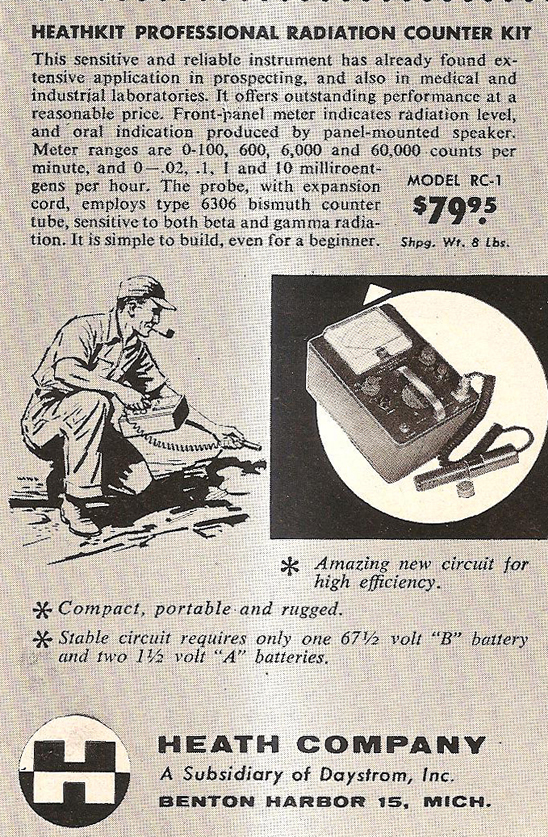
Heath Kit Ad 1957
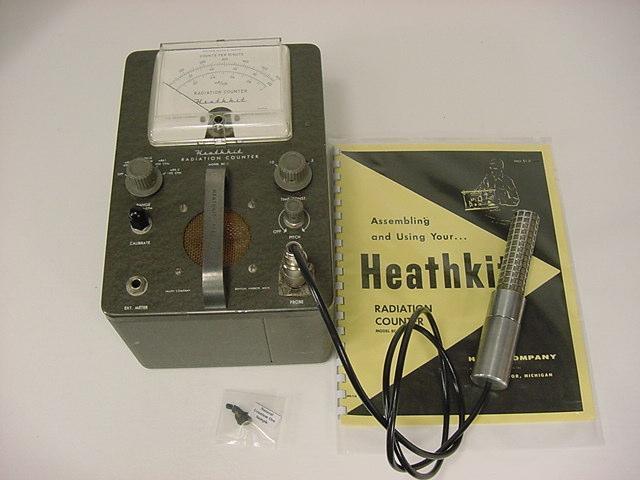
Heath Kit Geiger Counter 1950's
The Practical Prospector Model GMC-101 was offered as a kit instrument in the 1950’s for uranium prospecting.
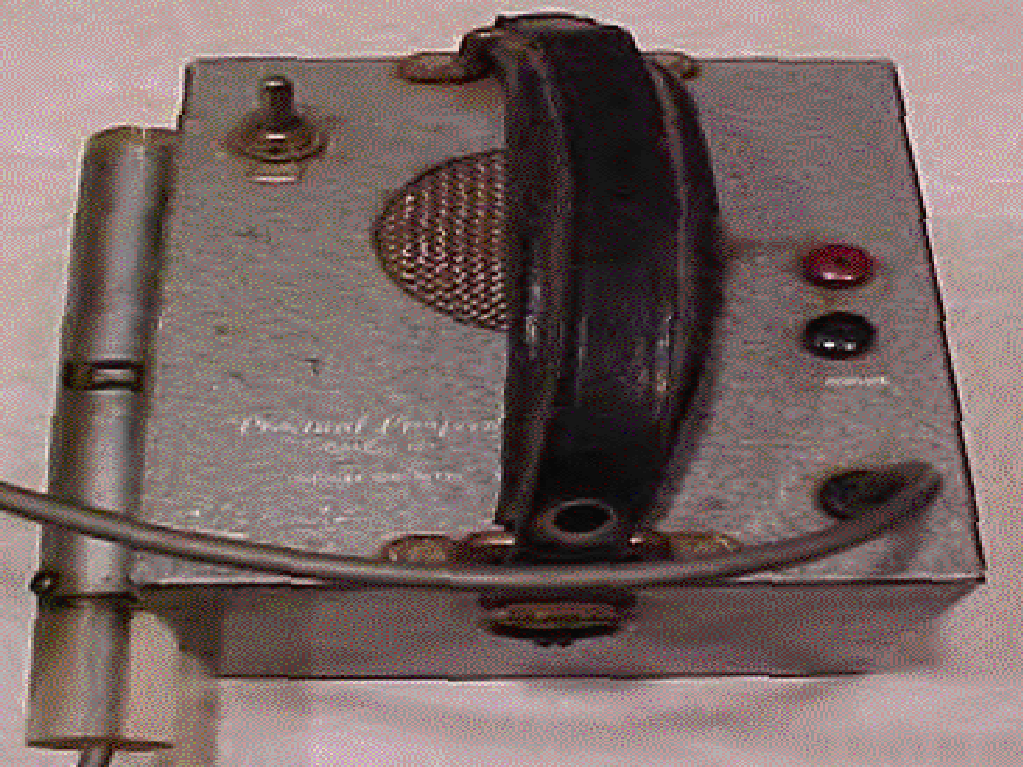
Practical Prospector Model GMC-101
Need photo
AEC Six Geiger Tube System 1955
The six tubes are oriented along the bottom of the case. The unit has three ranges from 0.03, 0.1 and 0.3 mR/h. You can monitor the headphones or the meter. It can be built for $180 and a kit was available from Federated Purchaser. It uses two flashlight batteries and one 1.4 and two 9.4 mercury batteries.
Popular Science published the “Super Geiger Counter You Can Build” by H. G. McEntee in May 1955. The unit uses six Geiger tubes mounted along the bottom of the unit with each tube capturing 1% of the gamma-rays. It was advertised to approach the sensitivity of a scintillation counter. A test unit was originally built by the AEC’s Health and Safety Laboratory. The article contains a schematics, diagrams, and a complete parts list. It could be built for about $180 in parts.
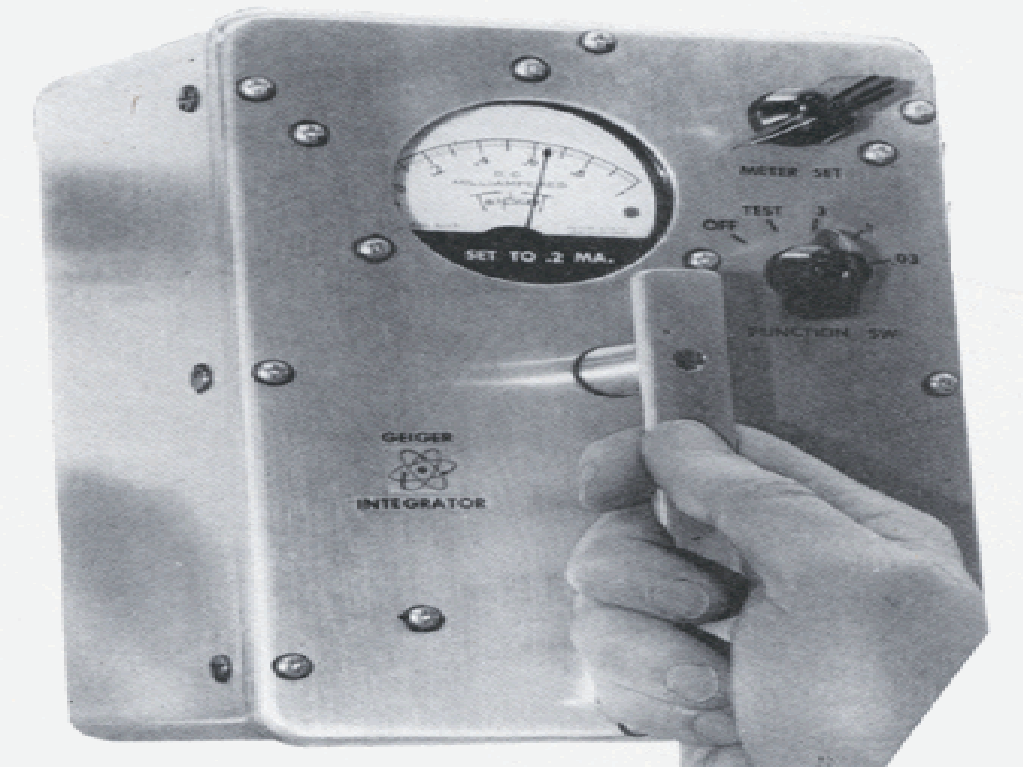
Popular Science Geiger Integrator 1955
The “Three Way Geiger Counter” was offered in 1955. It was a do-it-yourself project for amateur uranium prospectors. It had an aluminum case. The bottom opposite the handle had an opening with a clear plastic strip to protect the GM tube. It used two 1.5, one 45 and one 300 volt batteries. It has a meter, headphones and a neon flashing light for indications. The unit weighed 3 lbs.
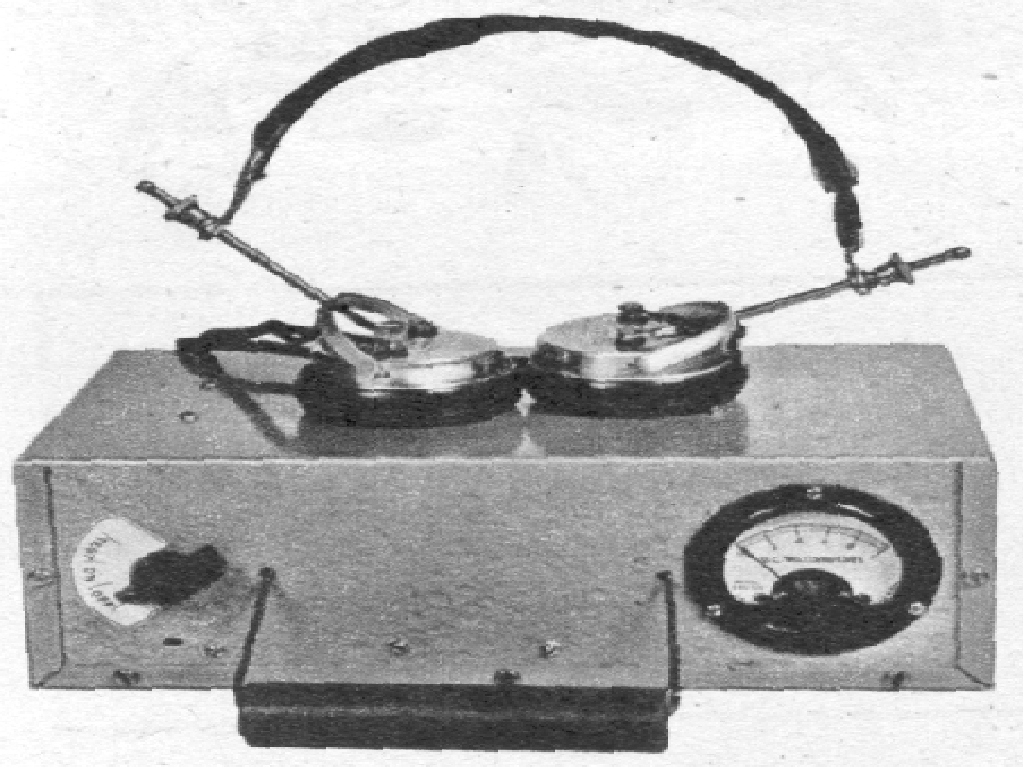
Three Way Geiger Counter 1955
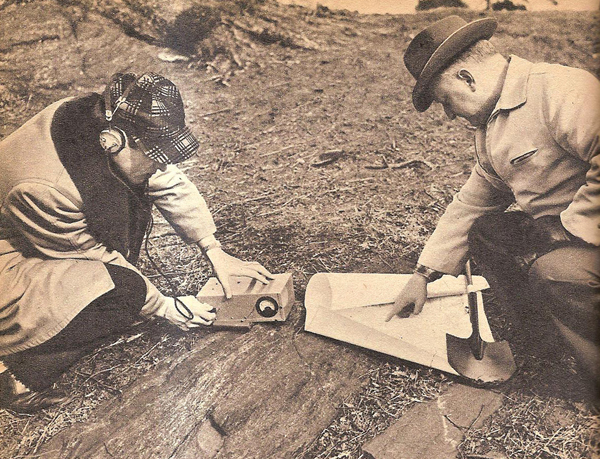
Three Way Geiger Counter 1955
The Friedland meter from 1951 was a practical Geiger counter that could easily be built using readily available electronic components. It operated at 850 volts. The cabinet is steel and measures 3" x 5" x 10". It had a meter and buzzer.
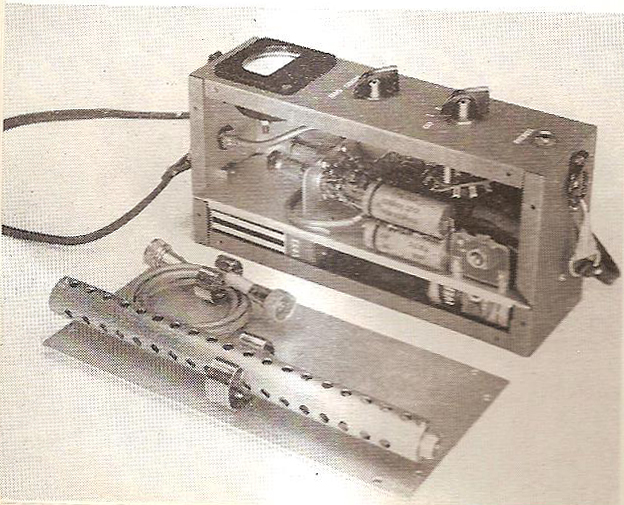
Friedland Meter 1951
The Friedland meter from August 1951 was built in two sections, one containing the meter, controls and batteries, and the other the ionization chamber, electrometer tube, and range switch. The latter assembly is in a plug-in shield can.
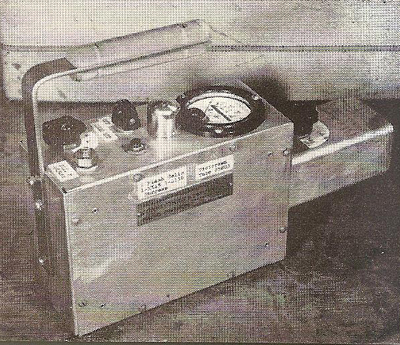
Friedland Meter from Amateur Radio Aug 1951
Mechanix Illustrated offered a transistorized Geiger counter in 1957 as a compact , low-cost instrument that uses a speaker, meter and neon light to indicate radioactivity. It measures 7" x 3" x 2". It contains a Lucite spark gap, Geiger tube and 1600 volt RC circuit. The meter is optional and attached by a plug in wire. All of the components could be obtained from Lafayette Radio Company at 100 Sixth Street in New York City.
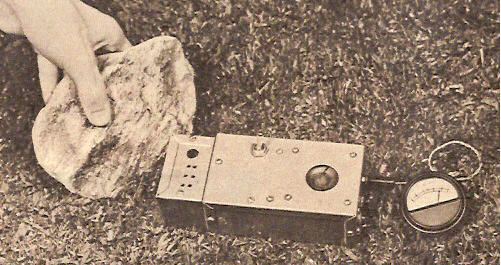
Transistorized Geiger Counter 1957
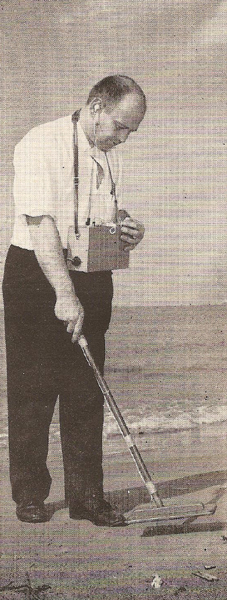
Treasure Finders 1961
The Poor Man's Geiger Counter from Radio-Electronics July 1955 featured an ingenious power supply using "something-for-nothing" circuitry, this instrument is very inexpensive, compact and lightweight. The unit was constructed in a 2" x 4" x 5.5" Masonite and plywood case. It was advertised to be constructed for about $20 so it lives up to its name.
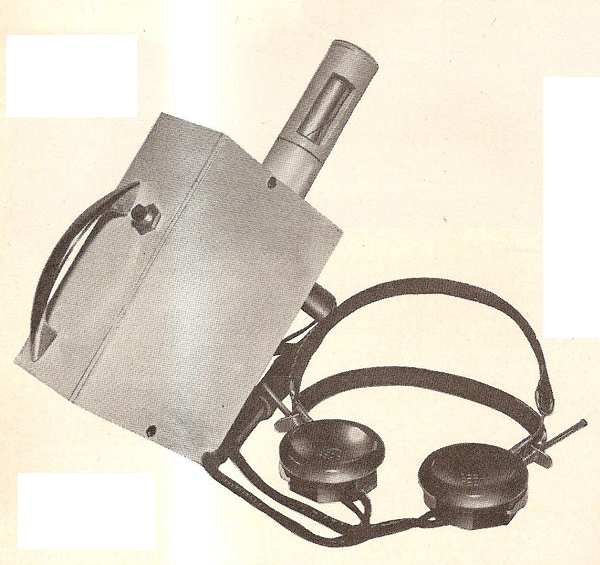
Poor Man's Geiger Counter by Elliott McCready 1955
In 1961, Mechanix Illustrated offered a transistor Geiger counter as inexpensive and easy to construct. It was small, lightweight and compact and advertised as the small Geiger counter with a loudspeaker. A optional meter could be plugged in as well. The article includes schematic and parts list. It measured 7" x 3" x 2".
Need photo
Mechanix Illustrated Transistor Geiger Counter 1961
Make Your Own Geiger Counter according to Atomic Energy Commission (AEC) specifications was published in Popular Science in March 1950. New circuits and parts make it easy and inexpensive to build a good radiation detector or survey meter. Advertised to clearly detect radiation from the radium-painted dial of a clock or watch, a dentist's x-ray machine, or the pre-war bathroom tile that was colored with uranium. It used two flashlight batteries. It used a three volt battery source with a 10-to-1 transformer to produce up to 1,600 volts. The AEC Instruments Branch and the Electronics Section, New York Operations supported this development.
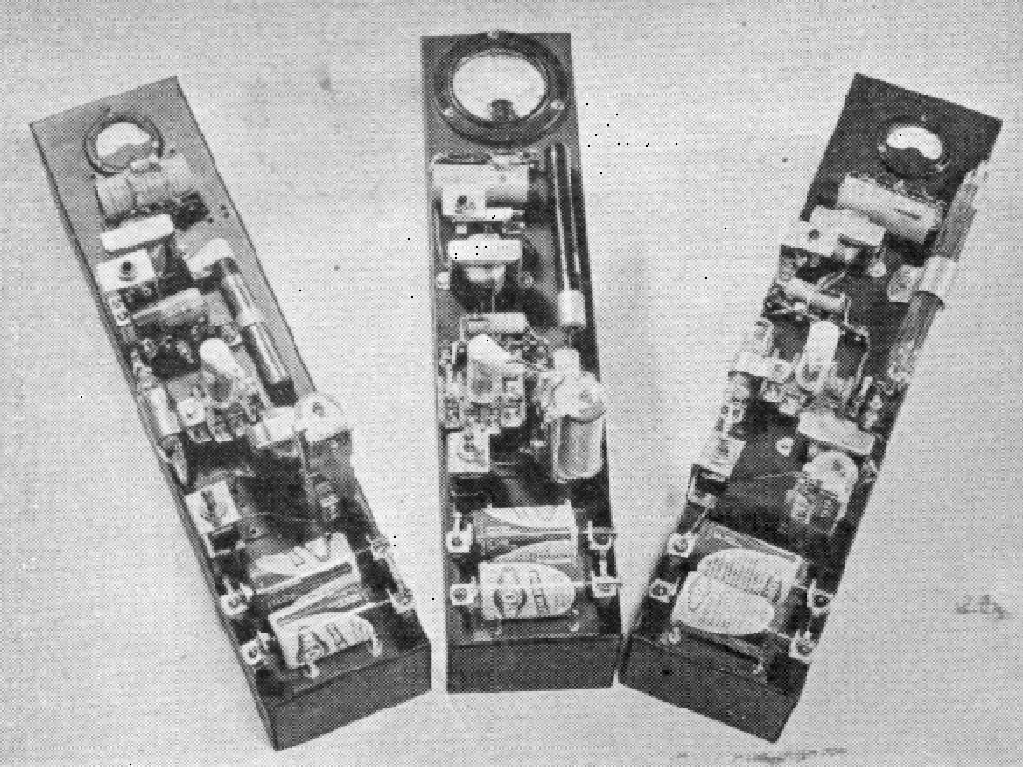
AEC Geiger Counter Kits in Popular Science March 1955
The Raytector Geiger Counter Kit was provided by James A. Batson Electronics of Omaha, Nebraska. The kit could be used to find uranium, make radiation surveys, and record cosmic rays. Advertising in 1951 stated that it was a real operating Geiger counter. Comes to you complete and already to use, protected by six months guarantee. Equipped with both headphone and a Neon Blinker Light to record count. Housed in study plastic box. Weight was 1 lb. 5 oz. and came with 3 samples for comparison - autunite, carnotite and uraninite. It sold for $19.95 in 1951.
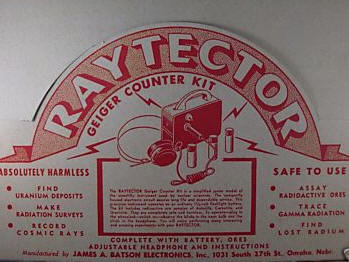
Raytector Geiger Counter Kit 1950's
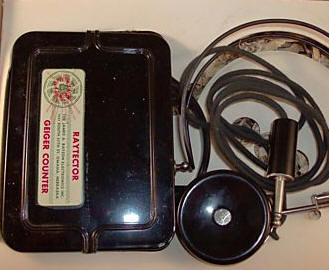
Raytector Geiger Counter Kit 1950's
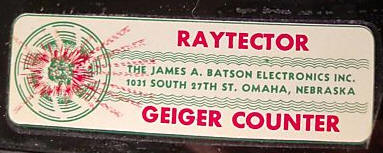
Raytector Geiger Counter Kit 1950's
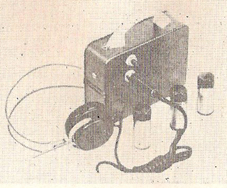
Raytector Geiger Counter Kit (from Old Prospector's Catalog) 1951
In 1956, R. Ives developed a portable Geiger counter which is sensitive and can "take it" under adverse field conditions. Although not a kit, the article came with schematics and plans for building the unit. The circuitry from previous instruments was redesigned to give both accurate and stable readings of radioactivity. The construction of the unit follows aeronautical procedure in order to make it rugged and stable as well as easy to service. The case is 1/16" steel and measures 3" x 5-1/2" x 12-1/2". It uses angle iron to enhance the strength and is welded. The case was cadmium plated to resist rust.

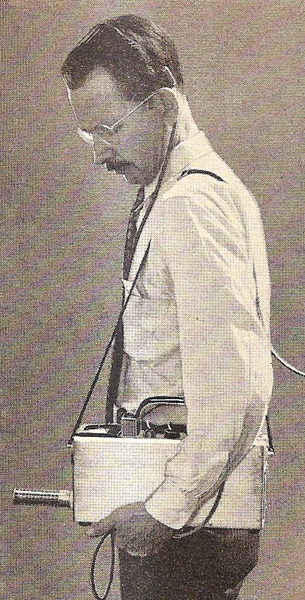
Ive's Detector from Radio and Television Magazine 1956
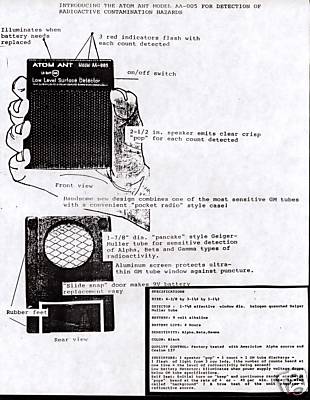
Atom Ant Detector 195x
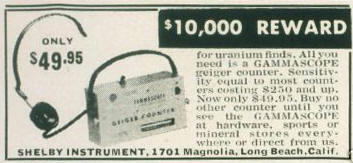
Shelby Instrument Gammascope 1955
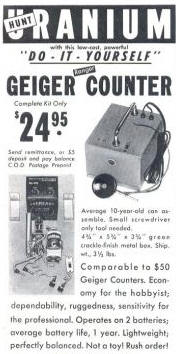
Roberts Manufacturing Ad 1955
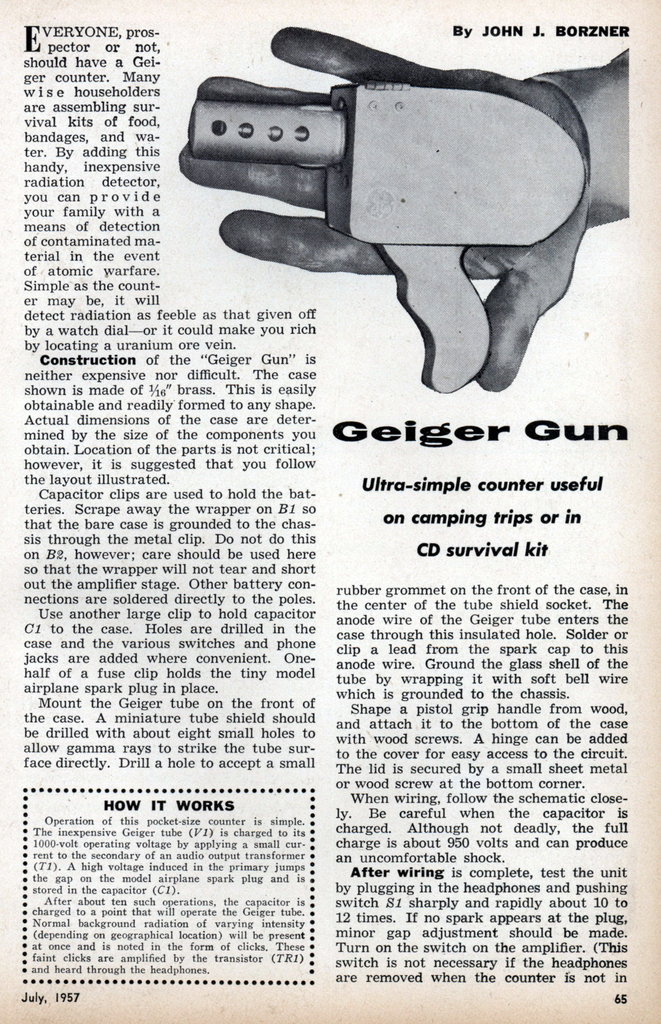

Geiger Gun 1957
Strike it Rich with a scintillation counter offered a kit design with sensitivity superior to any Geiger counter. The detector is built into the external probe so it can be stuck into cracks in rocks and the main unit can be set down which prospecting. The sodium iodide detector is one inch diameter by 1/2 inch long. It used two flashlight batteries that cost 25 cents. This unit was advertised in Mechanix Illustrated, June 1956.
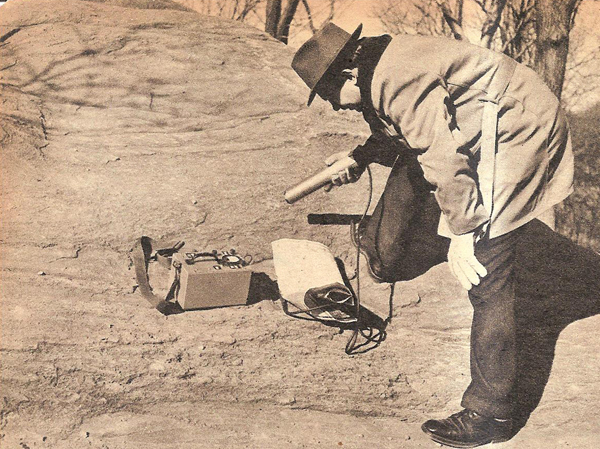
Strike It Rich with a Scintillation Counter by Jim Cavaseno in Mechanix Illustrated June 1956
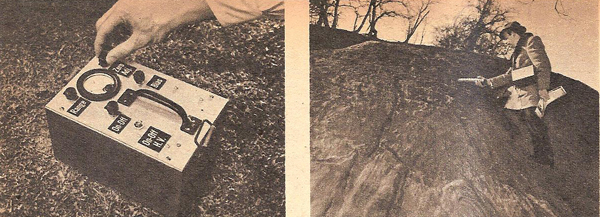
Last step in readying the counter is the adjusting of the zero control on the meter (left) and The detector is built into a probe unit for greater mobility and ease of handling.
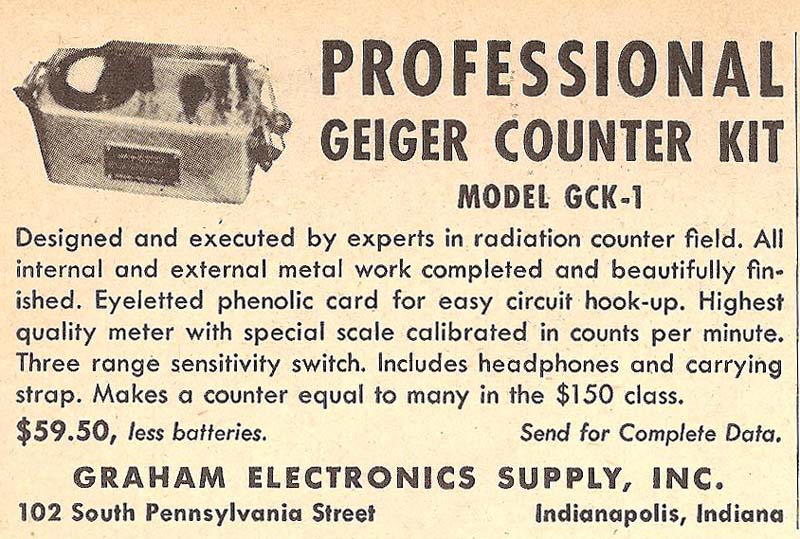
Graham Electronics Supply Model GCK-1 Kit 1955